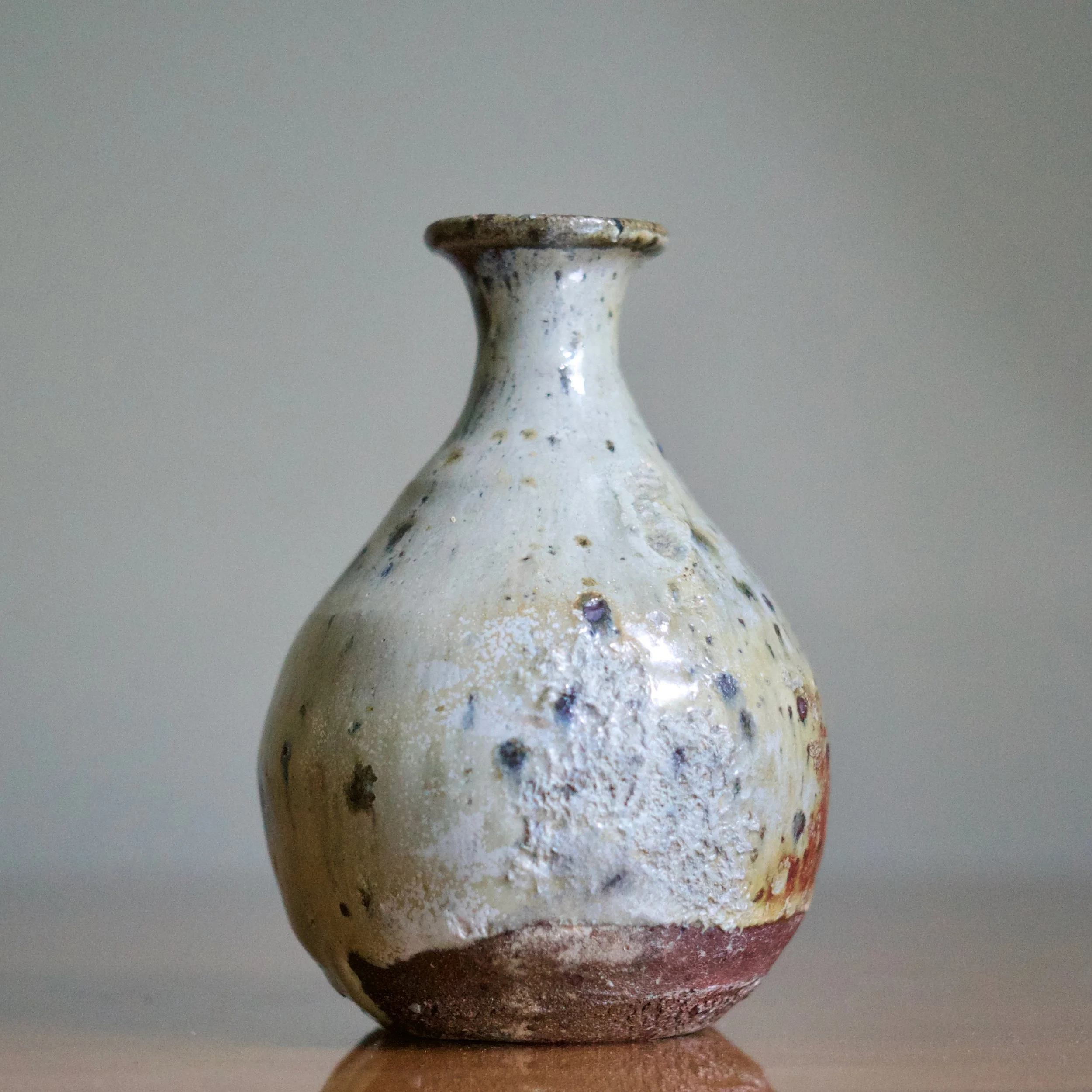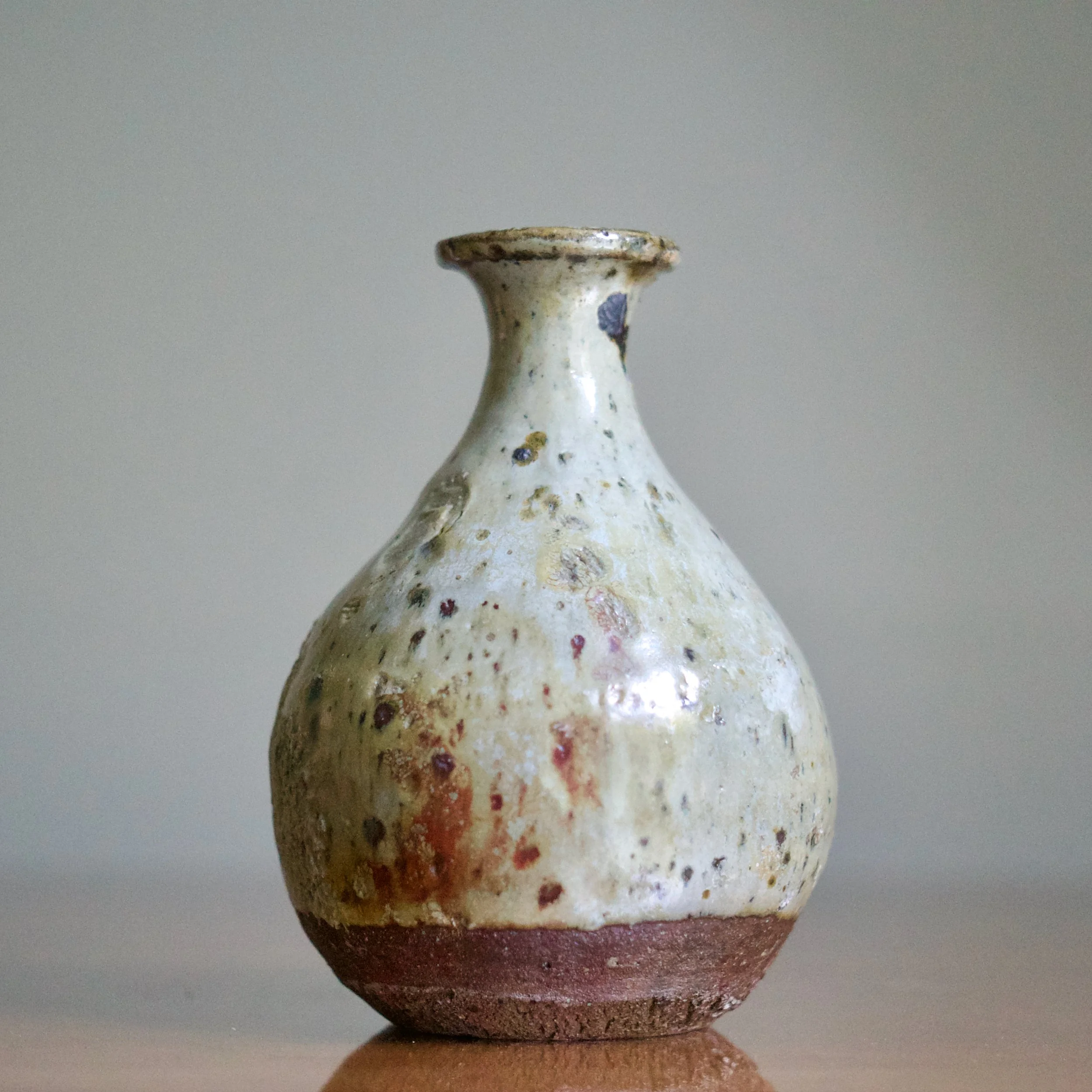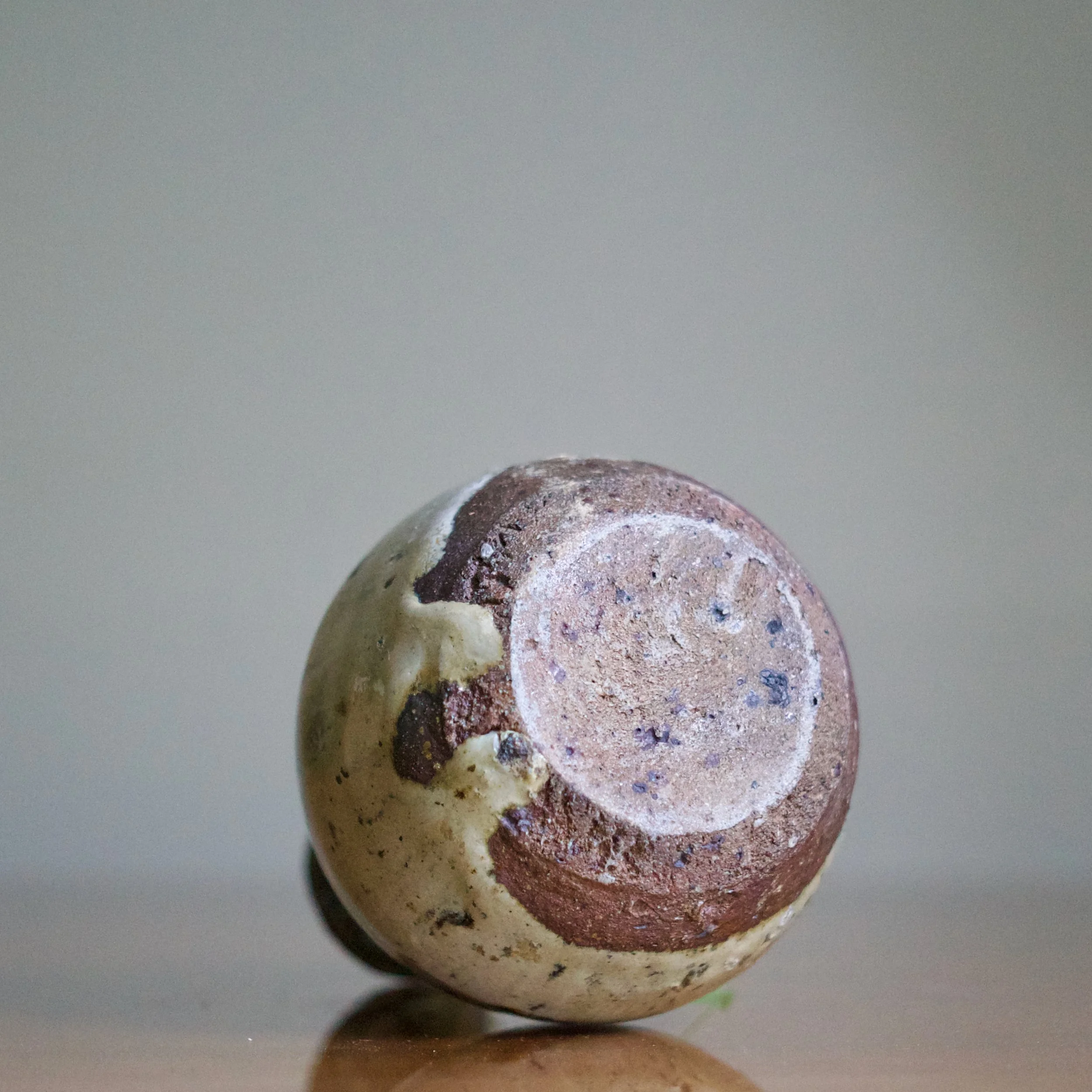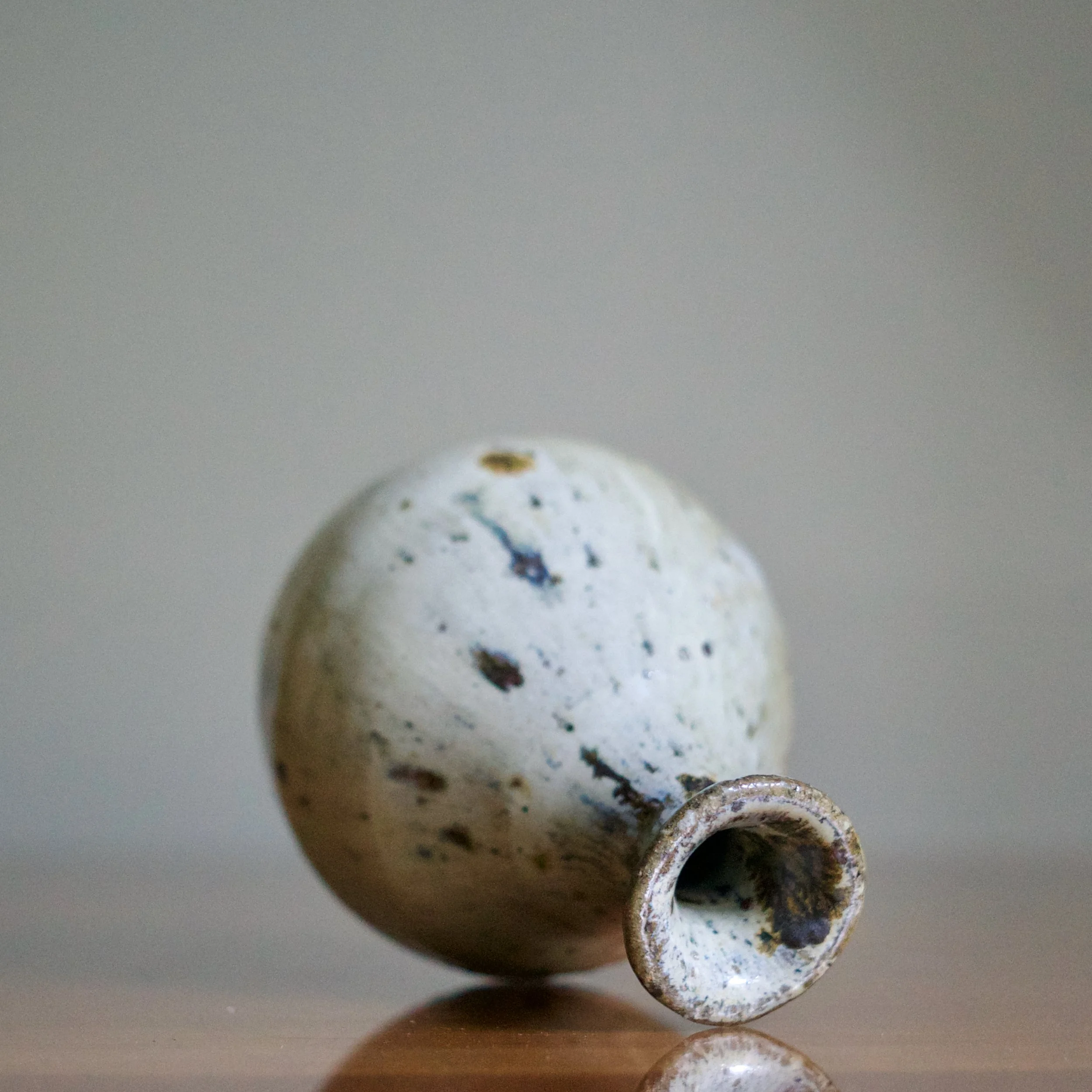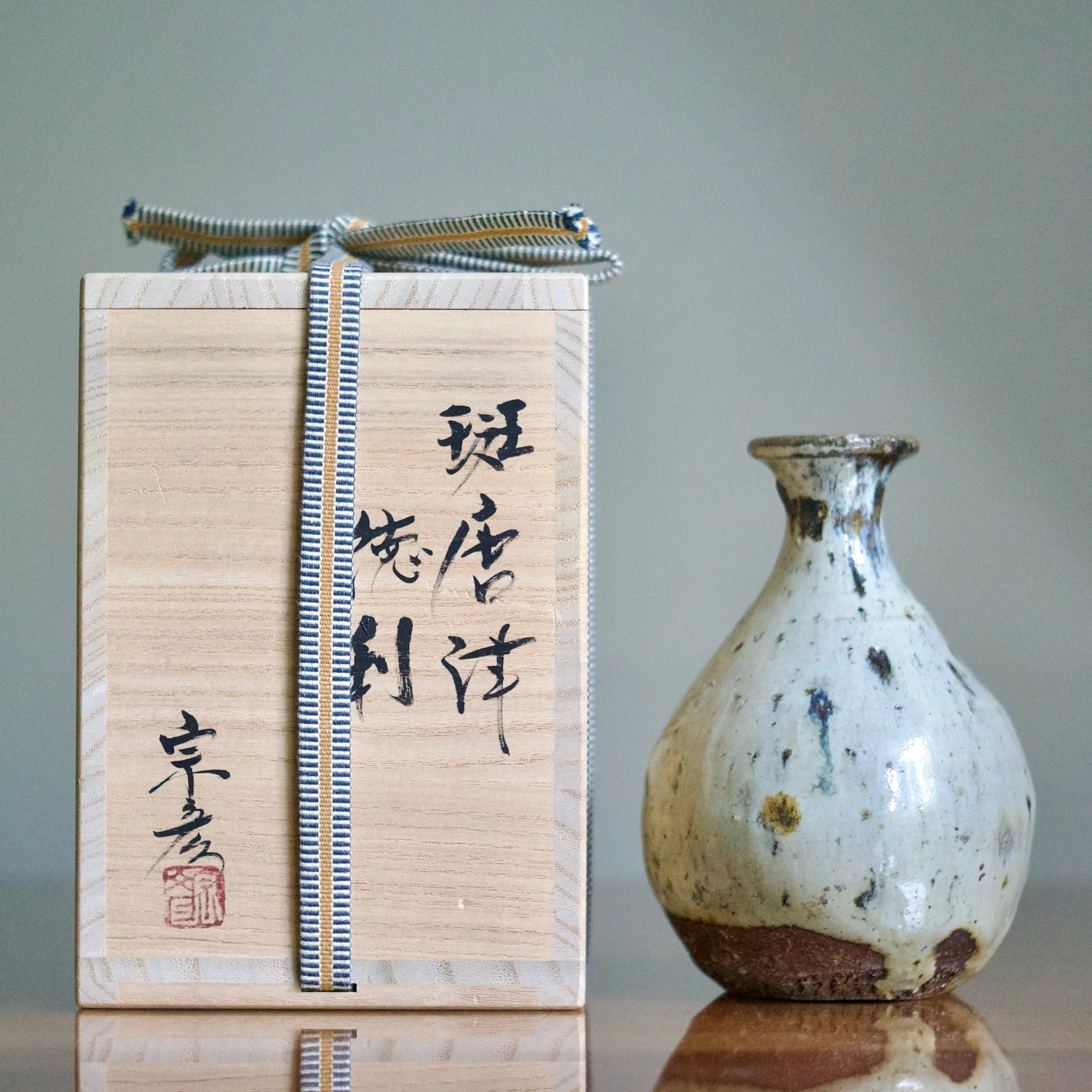Munehiko MARUTA (1961 -)
“斑唐津徳利” Madara karatsu tokkuri
Saraya Kawato-Gama, Takeo, Saga Prefecture; c. 2004; 5 1/2” tall by 4” wide
$425 (CAD)
Maruta Munehiko is one of the foremost potters working in the Karatsu tradition on the island of Kyushu in southern Japan. While he apprenticed in Mashiko with Hamada Shoji’s third son Atsuya in the 1980’s, Maruta returned to Takeo where his research and practice has made him a major player in the continuing revival of Karatsu wares.
Karatsu is one of the pottery practices originating in Korea and is known for a rustic simplicity that captures the beauty of its materials. The clay itself is primary: the body combines sandstone, feldspar and iron-oxide, resulting in a deep-brown clay that appears “soft” but, thanks to both the feldspar and high temperature wood-firing, is strong and impenetrable and more like a stoneware.
Madara Karatsu features a creamy grey rice straw ash over-glaze that completely covers the deep brown, iron-rich underglaze. Streaks of beautiful brown-black spotting from the underglaze rises to the surface to mottle the rice straw ash glaze.
However, a portion of the brown clay remains unadorned above the foot. And a key quality of Karatsu clay is revealed: Murata wheel-turned in the typical counter-clockwise direction, but once the clay dried enough, but still with just the right amount of moisture, he trimmed the foot in the opposite direction. This releases the “crepe” clay texturing much admired in Karatsu.
In varying proportions, Maruta achieves a balance between all three textures: the light and glossy rice straw glaze, the smooth unadorned brown clay body, and a narrow band of “crepe” textured clay at the foot.
Note that, while tokkuris are traditionally made to be used for serving sake, they also often serve to beautifully feature one or two flowers.

